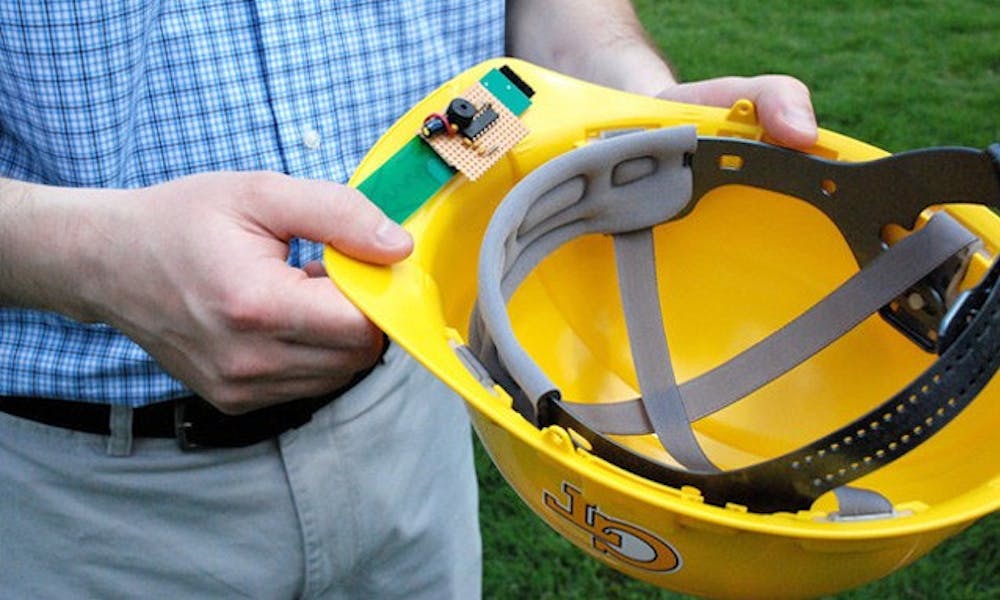A technology developed by Duke engineers aims to prevent accidents involving construction parts and equipment, which caused more than 800 deaths in 2009, according to the U.S. Bureau of Labor Statistics.
Matt Reynolds, a researcher in electrical and computer engineering, has worked for three years with several other engineers on developing a silicon microprocessor that uses radio frequency identification technology to pick up signals from wireless transmitters in heavy equipment used on construction sites.
This microprocessor is fastened to the top of a hard hat and is dubbed SmartHat. The device beeps with increasing frequency as workers get closer to nearby equipment. The SmartHat can also distinguish between the equipment a worker is operating and other equipment on site, warning workers accordingly.
“If the hat belongs to the driver of the bulldozer, the hat won’t beep when the driver nears the equipment,” said Stewart Thomas, a graduate researcher at Duke who has worked with Reynolds to develop prototypes of the SmartHat since 2008. “However, if [another] worker gets close to a bulldozer, his hat will beep.”
The device can also be set to only beep when equipment is traveling in the direction of the worker wearing the hat and does not require a battery for use.
“Many construction workers, such as miners, work in places of cold temperature,” Reynolds said. “Batteries go dead in cold temperature. Since the [SmartHat] device does not use a battery, the device can run forever.”
The project started in 2007, when Reynolds visited the Georgia Institute of Technology and met with Jochen Teizer, a researcher at the university’s School of Civil and Environmental Engineering. Teizer was interested in construction safety, and Reynolds mentioned his interest in wireless power transferring technology. They decided to combine their efforts and developed a proposal for the SmartHat project, which was approved for funding by the National Science Foundation in 2008. Since then, they have continued working to improve the technology.
Recently, Teizer conducted a trial with 149 construction workers and said that they expressed enthusiasm for the project.
“The device still needs to become a bit smaller,” Teizer said. “Ultimately, it should be integrated into the hard hat, and then it could be the perfect solution.”
Reynolds and Teizer plan to continue improving the device and conduct a bigger field trial. The project has already attracted the interest of several construction companies, and Reynolds and Teizer hope that with more improvements interest will continue to increase.
“Big companies have an interest in this technology because they have a lot of different problems with accidents,” Teizer said. “The incentive of this product is that it can warn workers, save lives, prevent injuries and save the costs associated with the accidents.”
Get The Chronicle straight to your inbox
Signup for our weekly newsletter. Cancel at any time.

